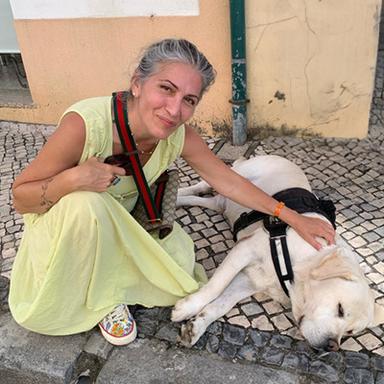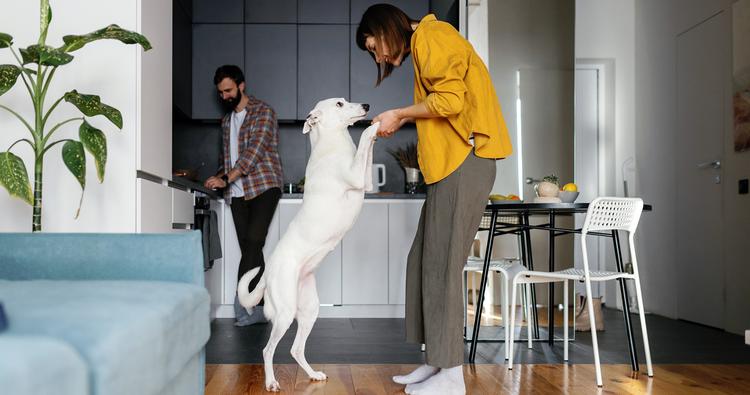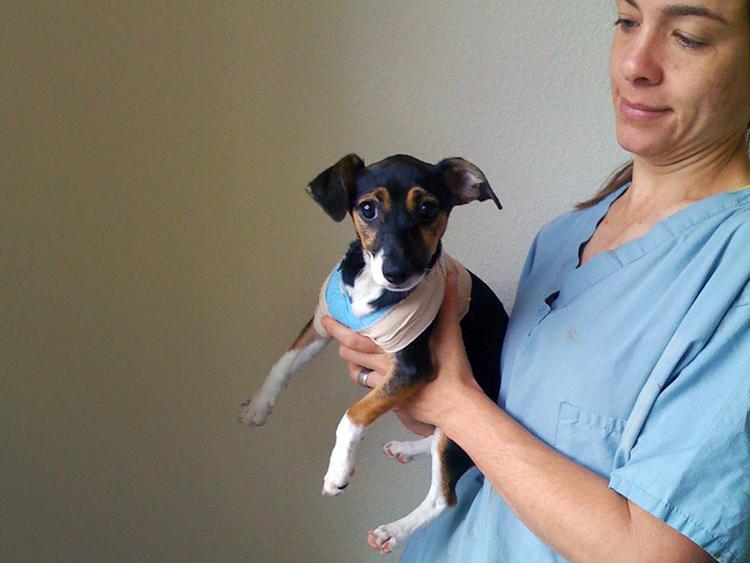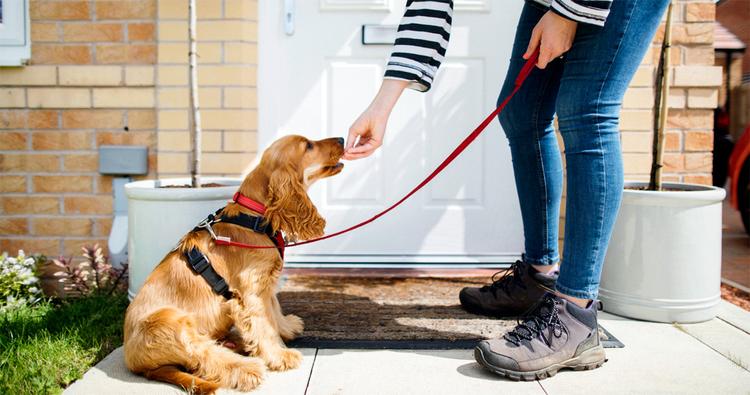Should I Get Two Puppies at Once?
From bonding to socializing, raising puppies two puppies at once is a lot of work. Here is what to expect if you decide to get a dynamic duo.
From bonding to socializing, raising puppies two puppies at once is a lot of work. Here is what to expect if you decide to get a dynamic duo.
by Vivian Zottola, MSc, CBCC, | April 2, 2024

Joseph Choi / Stocksy
A puppy is cute. But two puppies? Even cuter. Although the adorableness is irresistible and it might seem like double the fun, many experts, from trainers to shelter workers, warn about potential pitfalls. So, let’s be real: a whole lot of work goes into adopting a young pet, much less two of them. While raising two puppies is totally doable, it can be tougher than you might think and might not be the best fit for everyone. Let’s explore some of the pros and cons of raising two puppies at once.
Before we get into that, my first — and perhaps most important — piece of advice is that you take a more thoughtful approach when considering getting multiple puppies. This ensures they are provided the necessary care and support to develop into well-rounded adult dogs. You can expect this commitment to last more than 10 years, requiring you to dedicate personal resources — including time, as well as emotional and financial resources — to help meet their basic needs.
Raising two puppies at once can bring a host of benefits, from giving them a built-in play buddy and helping them develop strong social skills.
Dogs possess an incredible ability to recognize their own kin through scent, and it has been proven that male dogs form a special bond with their siblings. This instinct helps prevent inbreeding — promoting healthy, diverse genetics for the canine community. Although more research is needed to determine if females also demonstrate this behavior, it’s clear that the bond between siblings is a powerful force.
Dogs love spending time with other dogs. They often eagerly approach each other to play on the streets or at the park. At home, two dogs can entertain each other, which reduces time spent monitoring and playing with them — especially if you’re working from home. This is a win-win situation for both the dogs and their caretakers. While it’s still important to socialize puppies with other pups, having two dogs can take off some of that pressure. Think of it as having built-in daycare, without ever leaving home.
As puppies begin teething, they will chew and bite everything for some relief. At this young age, they must learn to control their bite pressure, especially when interacting with other dogs and people. Regular playtime and positive interactions with siblings allow young dogs to pick up critical social skills, such as the importance of sharing high-value objects and the consequences of biting too hard. With a little guidance and occasional intervention, you can help young pups learn these skills more effectively. This allows them to interact better, as they mature, with other dogs and people.
But to ensure proper socialization with dogs, it’s important for puppies to interact and play with other puppies beyond just their siblings. Exposure to different types of puppies in different safe and supervised environments can help prevent fear or aggression towards other dogs in the future.

Are you curious about adopting a bonded pair of dogs? Here’s what you need to know about bringing home two pups.
While raising two puppies together can be rewarding, it also comes with a few challenges, such as the risk of littermate syndrome, increased difficulty in training, and higher costs.
When raising two puppies together, the bond they form will be very special. This secure attachment provides a sense of safety and comfort, which is important for building healthy social relationships. However, it is just as important to bond with each puppy separately, so as not to experience “littermate syndrome” — or a very strong attachment to each other.
Canine scientists have determined that the best time for a puppy to start living with people is around eight weeks of age. This is the time when bonds with people and other animals will form. Studies have also shown that, at the age of one or two months, baby dogs adjust their walking pace to stay close to their human caregivers, indicating that attachment to humans occurs very early.
Make a concerted effort to plan one-on-one dates with each puppy, which may include activities such as playing games while practicing training skills, going for a walk, or simply cuddling with them. Showing a puppy affection makes them feel loved, secure and appreciated. This helps support a happy, peaceful environment, while fostering a personal bond with each dog that will grow stronger over time.
It’s also important to understand that each puppy — regardless if they’re from the same litter or not — will have their own unique personality and needs. One may be shier than the other or have different likes and dislikes. Handling two puppies can be overwhelming. It’s easy for one pup to get lost in the shuffle as you balance their different personalities and demands.
That’s why it’s crucial to spend quality one-on-one time with each puppy to establish a strong relationship. Knowing each of them independently is as essential as the dynamics and bond of the group as a whole.
Even though you have two puppies giving each other company, it’s recommended that you not leave them alone. They will require physical and mental stimulation in various forms: interactions with people, access to the outdoors, exercise, and training as they grow. Some options to consider may include daycare, hiring a pet sitter, getting a dog walker, or asking a friend to care for them.
Raising two puppies at once can be a wonderful, fulfilling experience. However, before taking in two pups, it’s important to take into account the various costs involved to make sure your new family members have the best care possible. Associated costs (for the length of their lives) include: food, veterinary care, insurance, and grooming supplies. You should also factor in the time and effort required to train them during puppyhood and adolescence, taking them for walks and exercise, and providing them with proper enrichment and socialization. These pet services can quickly add up, so before deciding to bring two puppies into your home, take time to consider these costs.
To set both puppies up for success, you’ll need to cover the basics, ensure effective potty training, and establish a solid crate training routine. Here’s how to approach training both puppies to help them thrive and grow into well-behaved dogs.
Separate pups for short training sessions: For those training two puppies at once on their own, keep one puppy in a gated area and provide them with a chew or engagement toy, while working with the other puppy on some skills for five to 10 minutes. Then switch.
Better yet, get help from a friend: When puppies are involved, there is usually no shortage of family and friends to help train them. And if that’s the case, you can train one puppy, while your friend or family member trains the other.
Attend separate group classes: You can also get help by attending a positive-reinforcement dog-training class. Additionally, several dog trainers and behavior specialists offer pre-recorded, self-paced positive-reinforcement training courses and presentations online.
Training young dogs to control their bladder is an essential aspect of their development, and it requires a lot of time, dedication, and patience on your part. This will be twice the work with two dogs, but it is possible. Here are a few house training tips for two puppies.
It’s best to establish a routine that involves feeding them at the same time every day and taking them outdoors to potty regularly.
Keeping a journal to document their progress is a great way to stay on top of their training and note any areas that need improvement. In addition, tracking their pooping habits can provide valuable information to share with your veterinarian, if needed.
When you start teaching puppies to go potty outside, it’s important to use a training pad to assist them in transitioning smoothly, in case of any accidents.
It’s also best to confine the puppies to a specific area during the day, so you can control their access to the outdoor potty spot. This way, you can monitor their progress and adjust their routines.
By providing them with a consistent environment and positive reinforcement, you can help your young dogs develop the skills they need to become happy, well-behaved pets.
When training your puppies to be comfortable in their crates, take your time and proceed gradually. By providing this structured environment, you can help your puppies feel secure while promoting healthy socialization and independent behavior.
Providing each puppy with their own crate can help them develop a sense of independence and security, so allow them to share a play area while maintaining separate “rooms.”
One large, gated common area, where puppies can play with each other, chew on their favorite toys, access water and food (when not training with you) — with two separate crates near one another.
Adopting two puppies from the same litter is possible. But it is crucial to consider the advantages and disadvantages of taking care of multiple puppies. To ensure proper care for your puppies, consider various factors such as expenses for veterinary care, food, grooming, training, and daily exercise — especially if you spend most of your day outside of your home. Also, taking care of your puppies starts with taking care of ourselves. Before adopting two puppies, prioritize your well-being, so that you can provide the best care possible for your new furry family members.
Deciding to get one or two puppies should be based on your ability to care for them. Raising a puppy can be a demanding task that requires a lot of patience, dedication, and responsibility. Consider your lifestyle, available resources, and the time and attention you can devote to your puppies. Two puppies can bring twice the joy and companionship, but it also means double the work, expenses, and training — because you must provide adequate care, socialization, and training to both puppies. Ultimately, it all comes down to your capacity and readiness to take on the responsibility of raising one or two puppies.
Caring for two dogs might seem overwhelming, but it’s not much different than caring for just one. Training, feeding, and looking after them is the same. You will use similar methods from teaching them basic skills to keeping them healthy and active. Having two dogs will require more time and effort. However, the love and happiness they bring to your life and to each other is worth it.
Do Dogs (Canis Lupus Familiaris) Prefer Family?

Vivian Zottola, MSc, is an applied anthrozoologist, dog psychologist, member of the Dog Writers Association of America, and research associate with the Center for Canine Behavior Studies, Inc. She runs her own practice in Boston, MA, specializing in the prevention and resolution of behavior challenges between humans and pet companion dogs. She also produces the podcast Click Therapy for Dogs and the People Who Love Them. Find her on Instagram.

Behavior & Training

Shelters & Rescue

Behavior & Training

Behavior & Training
Wondering if you should crate train your new pup? Yes, you should! Read on for everything you need to know about introducing your dog to crate-training.

Adoption Advice
The beginning of puppy parenthood can be rough, but it does get better — especially when you implement this advice.

Adoption Advice
Did you just bring home an adorable puppy?